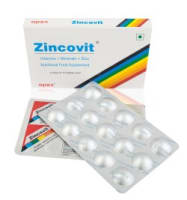
No interaction found

WEIGH RISKS VS BENEFITS
Zinbro-S Eye Drop may be unsafe to use during pregnancy.Animal studies have shown adverse effects on the foetus, however, there are limited human studies. The benefits from use in pregnant women may be acceptable despite the risk. Please consult your doctor.

No information is available on the use of Zinbro-S Eye Drop during lactation. Please consult your doctor.

Zinbro-S Eye Drop may make you feel dizzy, sleepy, tired, or decrease alertness. If this happens, do not drive.

Zinbro-S Eye Drop is probably safe to use in patients with kidney disease. Limited data available suggests that dose adjustment of Zinbro-S Eye Drop may not be needed in these patients. Please consult your doctor.Use of Zinbro-S Eye Drop may cause excessive sleepiness in patients with end stage kidney disease.

Zinbro-S Eye Drop is probably safe to use in patients with liver disease. Limited data available suggests that dose adjustment of Zinbro-S Eye Drop may not be needed in these patients. Please consult your doctor.
Uses of Boric Acid
Boric Acid is used to prevent infections.
How to use Boric Acid
This medicine is for external use only.Take it in the dose and duration as advised by your doctor. Check the label for directions before use. Hold the dropper close to the eye/ear without touching it. Gently squeeze the dropper and place the medicine inside the lower eyelid or ear. Wipe off extra liquid.
How Zinbro-S Eye Drop works
Boric acid belongs to class of drugs called antiseptics. It can weakly inhibit bacterial and fungal growth. It irrigates the eyes, cleanses, refreshes and soothes the irritated eyes; and help in removal of loose foreign material, air pollutants or chlorinated water..
Common Increased liver enzymes, Abdominal pain, Allergic reaction, Burning sensation, Irritation, Cns stimulation, Central nervous system depression, Diarrhoea, Rash, Vomiting.
Expert advice for Boric Acid
Avoid using boric acid for jock itch/groin itch for more than 2 week and athlete's foot or ringworm for more than 4 week.Do not use boric acid along with other eye medication containing polyvinyl alcohol.Avoid using this medication if you have any open wound or other skin injury around your eyes.Boric acid is a weak antibiotic and should not be used to treat any type of infection without the advice of a doctor. There are many other, more effective antibiotics available.Tell your doctor if you are or planning to become pregnant or are breastfeeding.
Uses of Chlorbutol
Chlorbutol is used to prevent infections.
How to use Chlorbutol
This medicine is for external use only.Take it in the dose and duration as advised by your doctor. Check the label for directions before use. Hold the dropper close to the eye/ear without touching it. Gently squeeze the dropper and place the medicine inside the lower eyelid or ear. Wipe off extra liquid.
How Zinbro-S Eye Drop works
Chlorbutol is an antiseptic, anesthetic, anti-irritant, and emollient agent. It works as local anesthetic by providing a quick relief from pain; bacteriostatic reinforcing the activity of chlorhexidine. It also produces a mild irritant effect on the respiratory tract, possibly via a nasal/pulmonary arc..
Common Nausea, Noisy breathing, Oral peeling, Parotid gland swelling, Abdominal cramp, Allergic reaction, Anaphylactic reaction, Burning sensation of tongue, Cough, Diarrhoea, Discoloration of teeth, Altered taste, Shortness of breath, Itching, Flushing (sense of warmth in the face, ears, neck and trunk), Skin reaction, Erythema, Sneezing, Subcutaneous swelling, Tongue discolouration, Vomiting, Burning sensation.
Expert advice for Chlorbutol
Cream:Avoid contact with eyes.Avoid prolonged use for more than 7 days.Wash hands well after use.Use it for external application only.Mouthwash:Do not use at the same time as toothpastes.Do not swallow the solution.Avoid contact with ears and eyes.Nasal decongestant capsule:Only inhale the vapor.Do not take capsule or drops internally.Avoid direct contact with skin or eyes.
Q. What is chlorobutanol used for?
Chlorbutol is used in different formulations such as cream, mouthwash and decongestant capsules.Cream: to treat mild pain caused by minor skin cuts, scratches and grazes (chapping) and soreness caused by detergents, soaps, deodorants and jewellery and bites and stings.Mouthwash solution: to inhibit dental plaque formation, as an aid in the treatment and prevention of irritation, redness, and swelling of gums (gingivitis), and in maintaining oral hygiene. It is important in the management of mouth ulceration and oral infections due to fungus candida and can be used as an adjuvant treatment for minor infections of the throat. It is also used as a disinfectant solution for cleansing of removable dentures.Capsule: for the symptomatic relief of colds and the symptomatic rapid relief of nasal congestion.
Uses of Chlorpheniramine
Chlorpheniramine is used in the treatment of allergic disorders.
How to use Chlorpheniramine
This medicine is for external use only.Take it in the dose and duration as advised by your doctor. Check the label for directions before use. Hold the dropper close to the eye/ear without touching it. Gently squeeze the dropper and place the medicine inside the lower eyelid or ear. Wipe off extra liquid.
How Zinbro-S Eye Drop works
Chlorpheniramine is an antihistaminic medication. It blocks the action of certain chemical messengers that are responsible for inflammation, congestion, itching, and other allergic reactions.
Common Sleepiness.
Expert advice for Chlorpheniramine
Avoid driving or operating dangerous machinery as it may decrease alertness. Avoid consuming alcohol when taking the Chlorpheniramine, as it may cause excessive sleepiness or drowsiness.
Q. Does chlorpheniramine or chlorpheniramine maleate cause increase in blood pressure/ drowsy/non drowsy/sedating/get you high/keep you awake/sleepiness/make you tired/weight gain?
Chlorpheniramine causing these side effects is common or rare. Always consult your doctor, if you experience any of these side effects
Q. Is chlorpheniramine like Benadryl?
No, chlorpheniramine is different from Benadryl
Q. Is chlorpheniramine prescription?
Yes, it is available with doctor’s prescription only
Q. Can I take chlorpheniramine or chlorpheniramine maleate with Panadol/ cetirizine /Zyrtec/ Allegra/ warfarin/ diphenhydramine/ ibuprofen/Claritin/guaifenesin/Benadryl?
Yes, but taking other medicines may alter the effects of chlorpheniramine. Always consult your doctor for the change of dose regimen or an alternative drug of choice that may strictly be required
Q. Does chlorpheniramine contain aspirin?
No, it does not contain aspirin in it. Chlorpheniramine is a different drug than aspirin.
Uses of Sodium Chloride
Sodium Chloride is used in short term fluid replacement after trauma, dehydration and irrigation solution for eye/nose.
How to use Sodium Chloride
This medicine is for external use only.Take it in the dose and duration as advised by your doctor. Check the label for directions before use. Hold the dropper close to the eye/ear without touching it. Gently squeeze the dropper and place the medicine inside the lower eyelid or ear. Wipe off extra liquid.
How Zinbro-S Eye Drop works
Sodium Chloride works by replacing fluid loss.
Common Volume overload.
Expert advice for Sodium Chloride
Your electrolyte levels in blood and other parameters (such as blood pressure etc.) will be monitored regularly as you receive intravenous sodium chloride.
Tell your doctor if you have disorders of the kidneys, lungs, problems of the heart related to impaired pumping of blood (congestive cardiac disorders), high blood pressure or pregnancy-related blood pressure problems (pre-eclampsia), fluid retention problems or swelling in hands, ankles or feet.
Seek immediate medical attention if you experience any unwanted swelling, trouble in breathing, muscle cramps, and/or weakness, fits, nausea, vomiting or stomach pain.
Tell your doctor if you are or planning to become pregnant or are breastfeeding.
Do not take if you are allergic to sodium chloride or any of its ingredients.
Do not give to patients with excess fluid or sodium in the space outside body cells (extracellular hyper hydration or hypervolemia).
Do not give to patients with abnormally low levels of sodium or chloride in blood (hyponatremia, hypochloremia), fluid and sodium retention problems or edema (swelling).
Do not give to patients with congestive heart failure (heart failure resulting in fluid build-up in lungs and other body tissues), severe liver and kidney functioning problems.
Q. Is sodium chloride soluble in water?
Sodium chloride is soluble in water
Q. Is Sodium Chloride acidic or basic?
Sodium Chloride is a neutral salt (neither acidic nor basic)
Q. Is Sodium Chloride ionic or covalent?
Sodium Chloride is an example of ionic bonding, where the molecule is formed by ionization of participating atoms and attraction between them
Q. Does Sodium Chloride expire?
Normally, Sodium Chloride does not have an expiry date if stored under appropriate conditions
Q. Is Sodium Chloride polar?
Sodium Chloride is ionic, which is considered highly polar
Q. Is Sodium Chloride an antioxidant?
Sodium Chloride does not possess antioxidant property.
Uses of Sulphacetamide / Sulfacetamide
Sulphacetamide / Sulfacetamide is used in the treatment of bacterial infections.
How to use Sulphacetamide / Sulfacetamide
This medicine is for external use only.Take it in the dose and duration as advised by your doctor. Check the label for directions before use. Hold the dropper close to the eye/ear without touching it. Gently squeeze the dropper and place the medicine inside the lower eyelid or ear. Wipe off extra liquid.
How Zinbro-S Eye Drop works
Sulphacetamide / Sulfacetamide is an antibiotic. It stops the bacteria from producing folic acid, a nutrient required for bacterial multiplication.
Common Nausea, Vomiting, Skin rash, Allergic reaction.
Expert advice for Sulphacetamide / Sulfacetamide
Do not use if the sulphacetamide solution changes color.
Seek immediate medical attention is you experience signs of a secondary infection, as long-term or repeated use of sulfacetamide drops may trigger the same.
Seek immediate medical attention if you experience any allergic symptoms such as rash, red, swollen, blistered, or peeling skin.
Avoid direct contact with the applicator tip to prevent any contamination. Keep the container tightly closed.
Do not drive or use any machinery after taking sulphacetamide as it may blurred the vision.
Tell your doctor if you are pregnant, planning to become pregnant or are breastfeeding.
Do not take if patient is allergic to sulphacetamide or any of its ingredients.
Do not given Infants less than 2 months.


 Zinbro-S Eye Drop
Zinbro-S Eye Drop  Bookmark
Bookmark





















